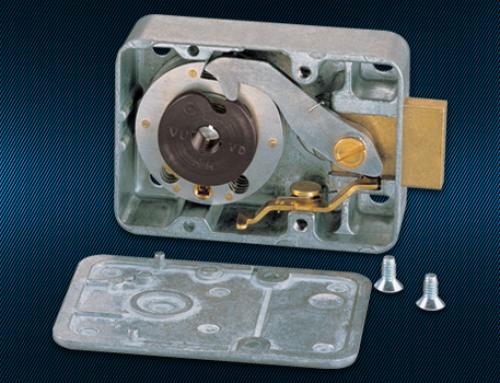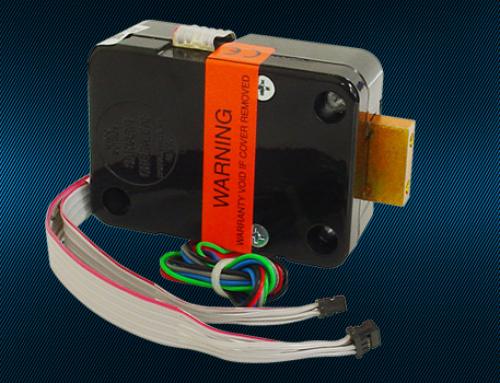Safe Deposit Box Locks
In this blog post I will discuss the four types of safe deposit box locks in use today. Before doing this however, I would like to briefly point out the two precursors to the modern safe deposit box lock: Barron’s two-lever lock and Chubb’s six-lever lock.
1. Barron’s Lever Lock
In 1778 Robert Barron patented the first “double acting” lever lock. He was the first to see that the deadlocking lever in warded locks, in addition to deadlocking the locking bolt in the extended position, could also be used to determine the height of the key blade. In Barron’s two-lever lock each lever is lifted a certain amount in order to allow the fences (or stumps) to pass through the gates. This design placed the fences in the levers and the gates in the bolt. Though an improvement on the warded lock, this design was limited in the number of levers that could be used, and therefore was not very secure. This lock design is still found in many inexpensive cabinet and drawer locks in use today.
2. Chubb’s Lever Lock
In about 1847 Jeremiah Chubb invented the six-lever lock which placed the fence in the bolt and the gates in the levers. This design feature is found in all modern safe deposit box locks. In this design, the key engages the bitting (or “saddle”) of each lever, which is under spring tension, to raise the gates in each lever the required amount so that the fence (or fences) may pass through them, and thus allow the bolt to be retracted. Though not pick proof, this lock provided more security than Barron’s lock.
3. Single Nose, Single Custody Lock
The single nose, single custody safe deposit box lock is operated using a single flat key, not a warded key like Barron’s lock or a barrel key like Chubb’s lock. This lock is also unique in that the bolt is retracted by the “foot” at the bottom of the plug (i.e. key hole). Finally, this lock design is also unique in that the gates are open on one side.
4. Single Nose, Dual Custody Lock
The single nose, dual custody lock is very similar to the one above, with one important difference – it requires two keys to be opened. These keys are called the “guard key” (or “prep key”) and the “renter key”. The guard’s key solves a portion of the lever pack and the renter’s key solves the remaining portion as well as retracts the bolt. When the renter’s key is used to extend the bolt, it scrambles the entire lever pack in the process, thus requiring that both keys be used to retract the bolt.
5. Double Nose Lock
The double nose lock is a dual custody lock with two lever packs and two fences. The guard’s key solves one pack and the renter’s key solves the other and retracts the bolt. Once the bolt is retracted the guard’s key can be removed from the lock. The renter’s key cannot be removed from the lock without extending the bolt. This prevents the box from being left unlocked.
6. Key Change Lock
Finally, the key change type of safe deposit box lock is a double nose lock that allows a vault clerk to change the combination of both the guard and renter tumblers using a special t-handle hex change key which is torque limited. The changeability of this lock is made possible by each lever having its own fence. In the locks above, the position of the gate in each lever determines the amount of lift required to solve the lock. In this lock however, the levers are all the same, so the position of each fence determines the amount of lift required to solve the lock.
Because of their compact design, durability, security, pick resistance, and cost effectiveness, safe deposit box locks are relied on by financial institutions and safe manufacturers the world over.









